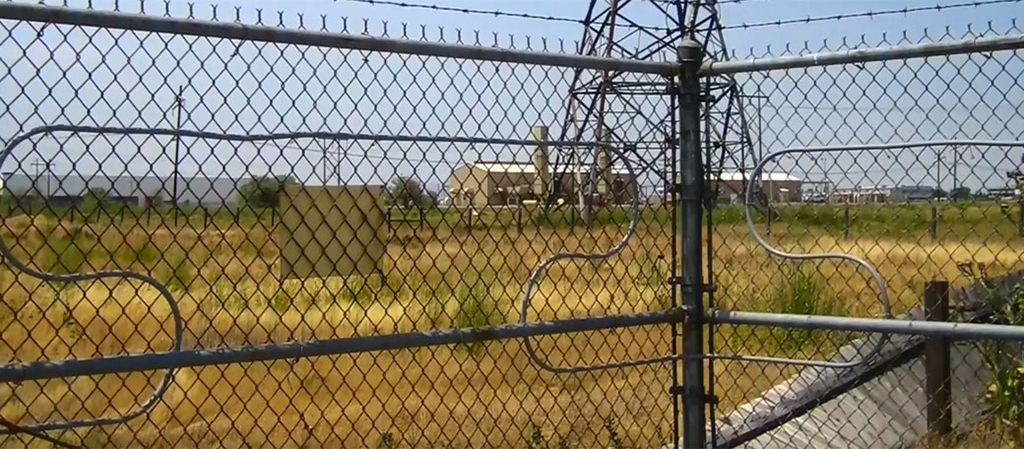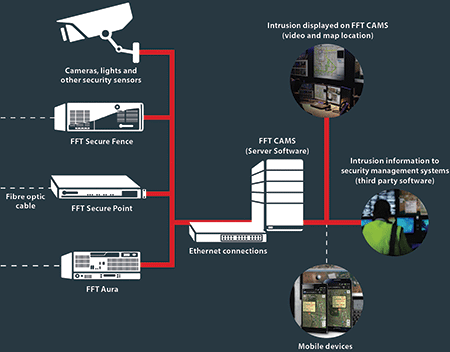The Future of Fiber Security System in High-Tech Security Solutions
The Future of Fiber Security System in High-Tech Security Solutions
Blog Article
Why Fiber Optic Safety Solutions Are the Future of Protection
The shift to fiber optic safety systems marks a considerable improvement in the world of protection, driven by their phenomenal information transmission capabilities and strength to exterior disturbances. As the landscape of safety and security advances along with emerging modern technologies such as AI and IoT, the possibility for fiber optics to boost and redefine protection facilities comes to be significantly evident.
Benefits of Fiber Optic Solutions
One of the key benefits of fiber optic systems is their remarkable bandwidth capability, which assists in the transmission of large quantities of data over fars away without significant loss. This particular is specifically advantageous for protection applications that need the continuous tracking and transfer of high-def video clip feeds, sensor information, and other crucial information. Fiber optics can accommodate the expanding demands of modern-day safety systems, guaranteeing that data stays intact and reliable.
Furthermore, fiber optic cable televisions are much less at risk to electromagnetic disturbance, which can be a significant concern in settings with different electronic gadgets. This resistance enhances the honesty of the data being transferred, thus minimizing the danger of information violations or system failings. Fiber optic systems are naturally a lot more secure than conventional copper wires, as touching into a fiber optic line without discovery is exceedingly tough.
The sturdiness of fiber optic cables likewise adds to their allure. They are resistant to ecological variables such as moisture and temperature fluctuations, lowering maintenance prices and raising system long life. In general, these benefits setting fiber optic systems as a durable and effective option for modern-day safety and security frameworks, making sure reliable and protected information transmission.
Improved Information Transmission Rate

The capacity to send large amounts of information promptly facilitates the seamless assimilation of high-definition video clip feeds and progressed analytics. Safety systems can currently process and evaluate details in real-time, improving action times and situational recognition. Furthermore, fiber optic connections support longer transmission ranges without deterioration of signal top quality, making them perfect for extensive safety and security networks.
The boosted speed of fiber optic systems not just boosts the performance of safety procedures but also minimizes latency. This is particularly important in crucial situations where timely decision-making can prevent safety and security violations or reduce prospective threats. As companies proceed to prioritize safety and performance, the need for quick and dependable data transmission will certainly strengthen fiber optic systems as a cornerstone of modern-day safety infrastructure.
Resistance to Disturbance
Fiber optic safety systems regularly show phenomenal resistance to electro-magnetic disturbance, a critical benefit in environments susceptible to digital noise. Unlike traditional copper cable televisions, which can be adversely impacted by electro-magnetic areas, superhigh frequency interference, and other forms of electric disturbance, fiber optic cables utilize light to send information. This inherent home ensures that the signals continue to be clear and unaltered, despite surrounding electronic activity.
The usage of glass check this site out or plastic fibers in fiber optic innovation develops a barrier against interference, enabling reputable data transmission even in tough scenarios such as industrial facilities, metropolitan locations with high digital website traffic, or locations near radio towers. This particular considerably lowers the possibility of signal degradation or loss, making fiber optic systems particularly suitable for safety applications where honesty and precision of information are critical.
Furthermore, this resistance to interference boosts the total efficiency and dependability of protection systems, ensuring that monitoring and sharp systems function effortlessly. In a world where safety is significantly threatened by innovative technologies, the resilience of fiber optic systems stands apart as an essential function, reinforcing their status as a vital component of modern-day security infrastructure.
Cost-Effectiveness In Time
Significant price financial savings can be accomplished over time with the implementation of fiber optic web link safety and security systems. While the initial financial investment might appear higher contrasted to typical copper-based systems, the lasting financial advantages emerge via reduced functional and maintenance prices (fiber security). Fiber optic cords are naturally more durable and much less at risk to environmental aspects, which equates to lower substitute and repair service costs over their lifespan
In addition, fiber optic systems call for much less power to operate, which better lowers power expenses. Boosted information transmission capacities enable less repeaters and amplifiers, minimizing devices investment and enhancing setup procedures. The scalability of these systems likewise adds to cost-effectiveness, as companies can broaden their safety facilities without sustaining substantial added expenses.
One more element to consider is the boosted efficiency in monitoring and action capacities that fiber optics give. Boosted real-time information transmission can cause quicker event feedback times, potentially mitigating losses and obligations related additional hints to security violations. In amount, the long-lasting advantages of fiber optic safety and security systems not only warrant the preliminary expenditure yet also position them as a financially prudent choice for companies looking for durable defense remedies.

Future Developments in Safety
Advancing modern technologies are readied to reinvent safety systems, incorporating man-made knowledge (AI) and artificial intelligence to improve threat discovery and feedback abilities. These developments will certainly permit safety systems to evaluate huge quantities of data in real-time, recognizing patterns and abnormalities that suggest prospective threats. This proactive technique will enable faster decision-making and more reliable incident responses.
In addition, the unification of the Internet of Things (IoT) is paving the means for interconnected security devices, providing extensive monitoring and tracking. Smart sensors can relay information about ecological modifications, while automated informs can inform safety personnel promptly of dubious tasks.
Additionally, the evolution of biometric modern technologies will further strengthen protection devices. Face acknowledgment, finger print scanning, and retina recognition are becoming much more innovative, giving layers of verification that are hard to bypass.
Conclusion
Finally, fiber optic security systems stand for a significant innovation in security innovation, providing unrivaled information transmission speed, resistance to electromagnetic disturbance, and lasting cost-effectiveness. As the demand for innovative safety and security options remains to expand, the assimilation of fiber optics with arising technologies such as AI, IoT, and biometrics will even more enhance protection infrastructures (fiber security). The mix of these advancements will make certain an extra safe and secure and responsive setting, solidifying fiber optics as a keystone of future safety and security systems
Report this page